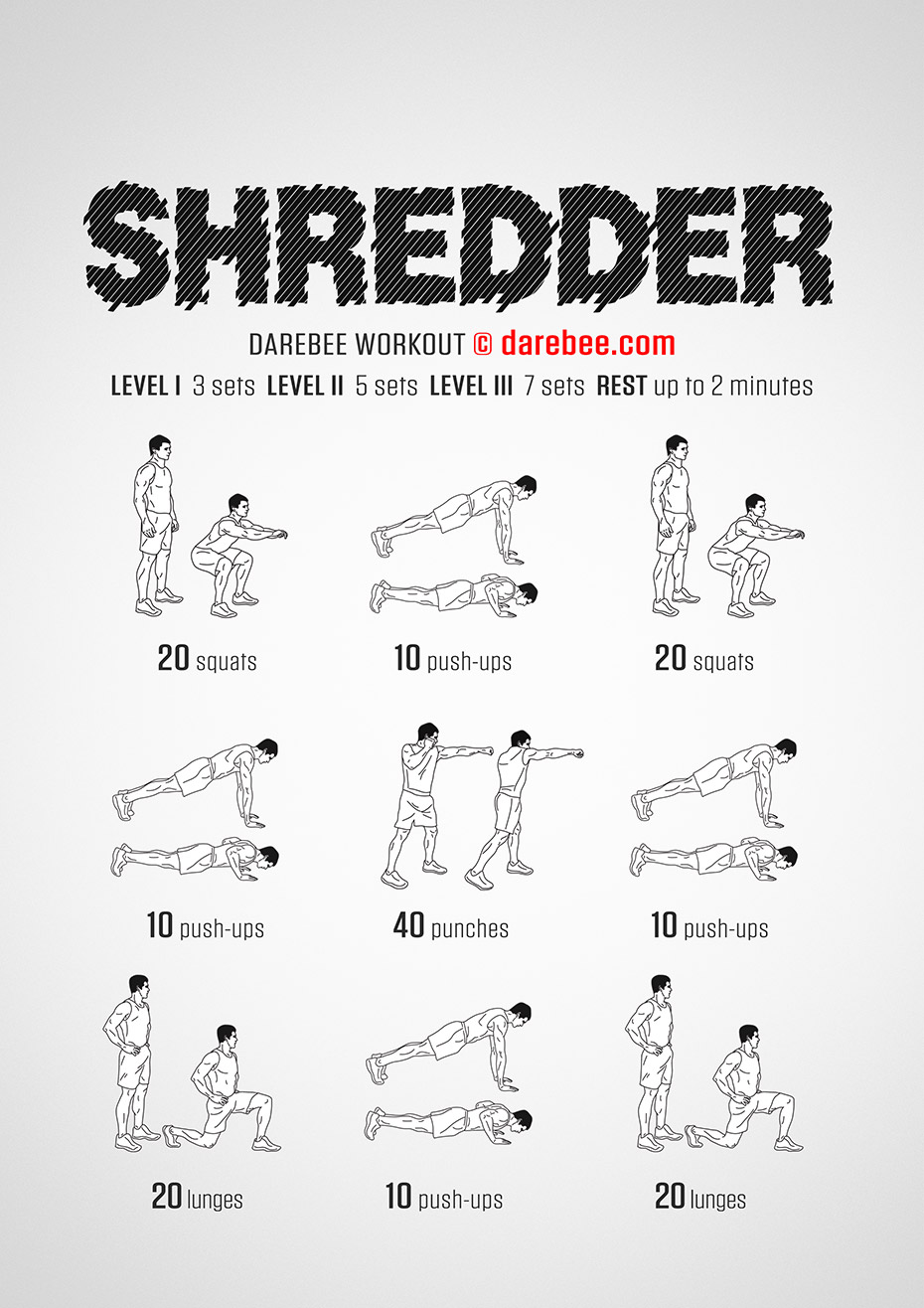30 Day Plan To Get Shredded

The allure of a sculpted physique in a mere 30 days is a siren song that echoes loudly in the digital age. Social media feeds are saturated with transformations, promising rapid results through meticulously crafted "shred" plans. But beneath the surface of viral workouts and before-and-after photos lies a complex reality: the human body is a nuanced machine, and drastic changes require careful consideration.
This article delves into the popular, yet often controversial, 30-day shred plan phenomenon. We’ll explore the feasibility of achieving significant physique changes in such a short timeframe, examine the potential risks and benefits, and consult expert opinions on safe and sustainable approaches to fitness.
Understanding the 30-Day Shred: Promises and Realities
The typical 30-day shred plan usually involves a combination of high-intensity interval training (HIIT), strength training, and a calorie-restricted diet. These programs often claim to deliver visible muscle definition and significant fat loss within the month-long period.
Proponents highlight the motivational aspect of a short, focused program. The limited timeframe can be appealing to individuals seeking a quick boost to kickstart their fitness journey.
However, experts caution against unrealistic expectations. "Significant muscle growth in 30 days is highly improbable for most individuals," states Dr. Emily Carter, a sports medicine physician at the National Institute of Health. "While some fat loss and muscle definition may be achievable, the extent will vary greatly depending on factors like genetics, starting fitness level, and adherence to the plan."
The Science of Fat Loss and Muscle Gain
Fat loss is fundamentally about creating a caloric deficit, meaning you burn more calories than you consume. A deficit of 3,500 calories generally equates to a pound of fat loss, according to the Mayo Clinic.
However, rapid weight loss can be detrimental, often leading to muscle loss alongside fat. "A healthy and sustainable rate of weight loss is generally considered to be 1-2 pounds per week," advises registered dietitian, Sarah Johnson.
Muscle growth, or hypertrophy, is an even slower process. It requires consistent resistance training, adequate protein intake, and sufficient recovery. It's very hard to build muscle in a caloric deficit.
Research suggests that beginners might experience faster initial muscle growth, but the rate slows down significantly as individuals become more trained. For many, a realistic muscle gain in a month is minimal, especially when simultaneously attempting to lose fat.
Potential Risks and Considerations
Aggressive 30-day shred plans can pose several risks. Overly restrictive diets can lead to nutrient deficiencies, fatigue, and hormonal imbalances.
High-intensity workouts, performed without proper preparation or adequate rest, can increase the risk of injuries such as muscle strains, sprains, and even stress fractures. "Overtraining is a common issue with these plans," notes certified personal trainer, Mark Thompson. "People often push themselves too hard, too soon, leading to burnout and potential injuries."
Furthermore, the rapid weight loss often associated with these plans can be unsustainable. Many individuals regain the weight they lost shortly after completing the program, leading to a cycle of yo-yo dieting.
A Balanced Approach to Fitness
Experts advocate for a more sustainable and holistic approach to fitness. Instead of focusing on short-term transformations, prioritize building healthy habits that can be maintained long-term.
This includes a balanced diet rich in whole foods, regular exercise that incorporates both cardio and strength training, and sufficient sleep and stress management. Consulting with a registered dietitian or certified personal trainer can help individuals develop a personalized plan tailored to their specific needs and goals.
Instead of aiming for dramatic changes in 30 days, focus on incremental progress. Set realistic goals, celebrate small victories, and remember that consistency is key.
Alternatives to the "Shred"
Several alternatives to the aggressive 30-day shred plan offer a more balanced and sustainable approach to fitness. These include gradually increasing exercise intensity and duration, focusing on nutrient-dense foods, and incorporating mindful eating practices.
Working with a qualified professional can provide personalized guidance and support. They can help you develop a safe and effective plan that aligns with your individual goals and health status. Remember that sustainable changes take time.
Consider focusing on building strength and endurance over time. Progressive overload is the key.
The Role of Genetics
Genetics play a significant role in determining an individual's physique and response to exercise. Some individuals may naturally have a higher metabolism or a greater propensity for building muscle.
Comparing yourself to others on social media can be detrimental, as these images often portray unrealistic standards. Focus on your own journey and celebrate your individual progress.
According to a study published in the Journal of Strength and Conditioning Research, genetic factors can account for up to 80% of the variation in muscle strength and size. This underscores the importance of understanding your own genetic predispositions and setting realistic expectations.
The Importance of Recovery
Recovery is just as important as training. Adequate sleep, proper nutrition, and stress management are crucial for muscle repair and overall well-being.
Overtraining can lead to hormonal imbalances, decreased immune function, and an increased risk of injuries. Incorporating rest days into your workout routine is essential.
Active recovery, such as light stretching or foam rolling, can also help improve blood flow and reduce muscle soreness. Listen to your body and prioritize rest when needed.
Moving Forward: A Sustainable Approach
While the allure of a rapid transformation is undeniable, a sustainable approach to fitness is far more beneficial in the long run. Focus on building healthy habits, prioritizing your well-being, and celebrating your progress along the way.
Remember that fitness is a journey, not a destination. There is no quick fix or magic bullet.
By adopting a balanced approach, you can achieve your fitness goals in a safe and sustainable manner, leading to lasting improvements in your health and well-being. Ultimately, the goal should be long term health, not a 30-day fix.


















